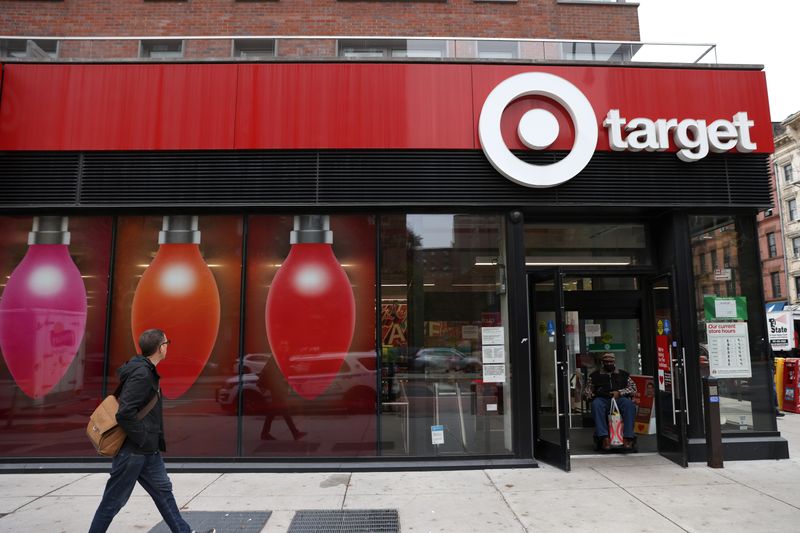Target raises 2024 profit forecast after price cuts boost quarterly sales
By Siddharth Cavale and Ananya Mariam Rajesh
(Reuters) -Target raised its full-year profit forecast on Wednesday and reported its first increase in quarterly comparable sales in over a year, driven by price cuts that attracted more shoppers to its stores.
Shares of the Minneapolis-based retailer rose 11% in premarket trading, after the chain said it expects 2024 profit in the range of $9.00 to $9.70 per share, up from its prior range of $8.60 to $9.60.
Second-quarter comparable sales, or sales from online and stores open at least 12 months, rose 2% in the quarter ended Aug. 3, the first rise in over a year. Analysts on average estimated a 1.15% rise in comparable sales, according to LSEG.
Target said traffic drove all its gains in comparable sales as price cuts on thousands of items proved to be a powerful lure for shoppers who have been dealing with a rapid rise in grocery prices and interest rates.
This summer, the Minneapolis-based chain reduced prices on over 5,000 popular items, including bread, soda, paper towels, and pet food. In February, it introduced a new private-label basics line called dealworthy, with most of the 400 items priced under $10. Additionally, it expanded its Good & Gather and Favorite Day brands by adding 125 new food products.
Target's Chief Executive Officer, Brian Cornell, said shoppers responded to this "newness" and the price cuts.
Apparel sales were also a bright point, rising 3%, reversing several quarters of sales declines, led by private-label All In Motion and Wild Fable lines.
STRONG CONSUMER SPENDING
Target's report and bigger rival Walmart (NYSE:WMT )'s raising of its annual sales and profit forecasts last week are a sign that U.S. consumer spending is strong ahead of the Federal Reserve's expected rate cuts in September.
U.S. retail sales also rose more than expected in July, allaying fears that the U.S. economy was heading towards a recession following signs of a weakening job market.
Rising prices of food and items for immediate consumption since the pandemic have led Americans to prioritize spending on groceries and everyday essentials, while cutting back on purchases like apparel, electronics, and home goods. This shift has posed a challenge for Target, which relies on discretionary products for more than 60% of its annual sales.
However, in the second quarter, the company reported gains across all six of its merchandising categories, including home decor, furnishings, and clothing.
"We see an incredibly resilient consumer in the face of high inflation and some of the other challenges they've been facing to manage their household budgets," Cornell said on a media call.
Target retained its full-year comparable sales forecast of flat to 2% rise, but cautioned that the growth will be skewed to the lower half of the range. Analysts polled by LSEG were expecting a 0.36% rise.
Target reported second-quarter earnings on both a net and adjusted basis of $2.57 per share. Analysts on an average were expecting $2.18 per share.
Its quarterly gross margin rate was 28.9%, up from 27% last year, in part due to a better grip on inventories and higher revenue at its advertising unit, Roundel.
Source: Investing.com
